Martial Arts are systems of different disciplines of fighting practices and some of this can be hardest to learn.
People learn those fighting arts for multiple reasons including, physical & mental health, self-defense, war tools, competitions, and law enforcement.
The fighting styles can be categorized as traditional, contemporary, historical, hybrid, armed, and unarmed – Stick fighting, sword fighting – fighting techniques.
Some fighting disciplines are related to brutality, while some are specially designed for grappling and taking down.
The fighting styles that were designed for army personal are the most brutal ones, and bring too much damage to the opponent because that’s the demand of the situation during a war; to hurt or kill them to keep proceeding.
Sambo and Muay Thai, are the most brutal ones because of being related to army training.
On the other hand, some fighting disciplines are relatively soft toward the opponents where the purpose is to stay safe and keep the opponents safe – as much as possible – too. ( Top 10 Best Martial Arts to Learn For Adults)
Judo is the example where hurting is not the main purpose, but the opponent’s energy is used against them to make them tired and then land a pin to end the fight.
Some of the techniques are the inside fighting styles – Judo and Jiu-Jitsu –while some are the outside ones – Kickboxing-. And there are a few styles that are hybrid of inside and outside fighting styles like Muay Thai and Karate.
From all the fighting styles, some of the techniques are relatively easy to master while others are much more difficult to learn, and that’s our topic for today.
We are going to discuss the top 10 fighting arts hardest to learn.
We will discuss the fighting styles that are hardest to learn due to the involvement of some difficult to master factors.
Furthermore, this list is focused on fighting disciplines that are easy to be accessed and practiced anywhere in the world because of the availability of coaches and training gyms.
Let us go from the easy to the hardest ones.
#10 Boxing
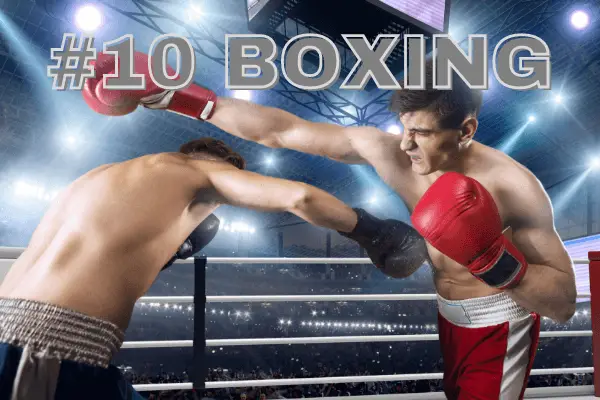
Boxing is an art of only two limbs – the fists – and that is why it is not too hard to learn as compared to other fighting arts on this list.
In boxing, one needs to master the jabs and a number of power shots like upper cuts, hooks, straight-right, straight-left- lever shots, and different combinations for attacking.
For defense purposes, a fighter learns the head and body movement with quality footwork.
Head movement and foot work not only aids a fighter to land a good shot from any point, but it also helps in the ring cutting and staying away from the danger zone.
Furthermore, the old school boxers do learn the shoulder rolling technique.
Shoulder rolling helps to neutralize the one hand of the opponent. Even from a close distance, one remains safe from the shots while rolling shoulders and staying in a situation like a tortoise in the shell.
There are two more things to be mastered, the first one is counter punches, and the other is switch hitting.
What is counter punching in boxing?
Counter punch is throwing a power shot right after avoiding the attack.
What is switch hitting in boxing?
Switch hitting is changing the fighting stance from orthodox to southpaw and vice versa.
Another easy to learn factor about boxing is the basic boxing can be learned without a partner.
All you need is a pair of gloves, a punching bag, and a speed ball. These three things along with a series of training videos – we can get from YouTube – can help a person to start learning right away, even in his or her room.
And same is the case for shadow boxing. But once the simulation of an actual fight is needed, there is a need for a sparring partner and a coach.
A sparring partner responds in the way the opponent can do during a fight. Furthermore, the coach with a mitt or a hitting pad can teach the combinations to land during an actual fight.
#9 Karate

Karate is a good fighting discipline to learn specially Shotokan Karate. Its training centers are all around the world, and the same goes for the coaches.
One can start learning the basics of Karate at the home by knowing how to throw punches and jabs.
Then there comes a set of kicks like the round kicks, the front snap kicks, flying back kicks, Axe kicks, and the front kicks.
The roundhouse kick needs an advanced level of practice and coaching as well. T
hen the foot work is also the part of Karate where a fighter throws a kick or a punch and moves in a posture to land the next one from an accurate angle.
The first step of karate is a little bit painful – the same is the case for any other fighting technique where kicking is involved -, it is called leg stretching.
In leg stretching, a fighter expands his legs to the maximum possible while sitting on the ground. Stretching helps to gain more reach and aids in leg moving with easiness while throwing the strikes.
Stretching must be done by a coach instead of a person doing it himself.
#8 Kickboxing
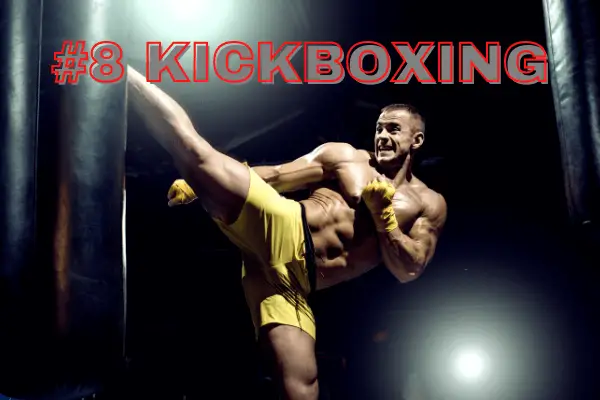
Developed from Thai Boxing, Kickboxing is referred to as the subsidiary of Muay Thai.
It is known as the art of four limbs and involves punching and kicking along with a little clinching – while standing only -. At a glance, it can be seen as a mix of traditional karate fighting style with a combination of boxing.
Kick boxers need to maintain a safe distance to throw different combinations of strikes and to cut the ring with great footwork where one can throw strikes at will during the movement.
There are a lot of difficulties to master kicks in this sport, for example, Heel Hook kicks,Hell front kick, Feet Jab, Hook and the Side Kicks.
One of the advanced levels of the kick is the 45 degree roundhouse one.
So Kickboxing is not as easy to learn as boxing or Karate, but it needs a full mastery to proceed as a kick boxer who uses his legs as swords and spears.
And then, mastering the right combination of kicks and punches needs another level of practice where a fighter throws a flurry of the strikes by out lashing the opponent with head snapping and rib breaking shots to end the fight with a lethal combo.
#7 Taekwondo

Taekwondo is an emerging Korean fighting art. It is related to throwing the head high kicks to the opponents with speed and accuracy.
Taekwondo theory is “throwing a strike with speed hurts more than a strike thrown with size advantage” Taekwondo is a hybrid fighting technique developed in the ‘60s by the Korean fighters.
This fighting style is about throwing punches and kicks mainly targeted at the head of the opponents. There is grappling added into Taekwondo but at a very little level. Taekwondo is about the outside fighting trick.
It is tough to learn martial art due to its combinations of different types of kicks , mostly the high ones.
It is really hard to master the kicks in Taekwondo, and the most famous kicks are :
- Ap Chagi
- Yeop Chagi
- Bandae Chagi
- Dollyeo Chagi
- and Dwit Chagi
Then there are varieties of brutal punches that need another level of skills to master and combine them with the kicks.
Some famous punches are
- C Shaped punch
- Diguetja Punch
- Fork Punch
- Chetdar Jiregu,
- Half Clenched Fist punch
- Pyeon Jumek Jireugi, lift punch
- Chi Jireugi, and Geumgang punch
#6 Wrestling
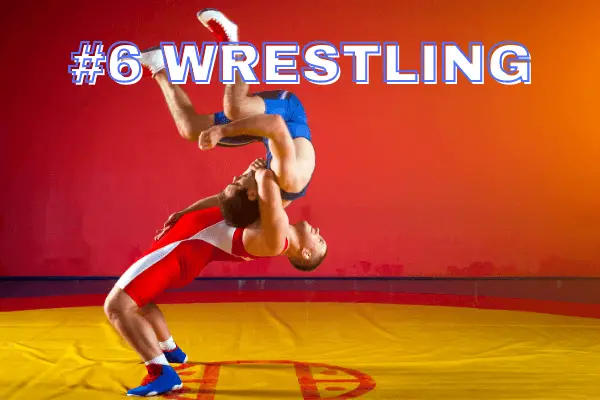
Wrestling is known as the oldest fighting art on the earth, and its history is untraceable because of being an ancient one.
It is all about grappling, taking down, and throwing the opponents at the ground. Apparently, it looks easy, but it is one of the most difficult fighting disciplines to learn.
There are many situations where we see wrestling during a fight, for example, a situation when fighters are clinching while standing, the other when one fighter is standing and the other is on the ground, and the third is when both are on the ground.
And then it is about variants of positions in each of the clinch. And this is the same as what usually Mixed Martial artists practice at any stage of the bout, during almost every fight.
There another situation when fighters take down the opponents during clinches and there is a situation of ground and pound when both the fighters are on the earth and exchange strike before applying any lock or choke. In short, there is a lot to master in wrestling, and it is not only about grappling and manhandling the opponents with great skills and consistency.
#5 Jujutsu
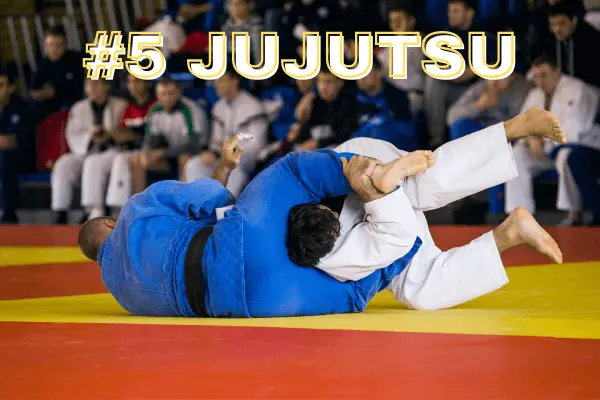
Jujutsu is an old Japanese fighting style focused on the close combat system to overcome opponents with or without weapons.
Jujutsu is the parental sport of many of the current fighting styles like Judo, Sambo, and Brazilian Jiu-Jitsu.
It is about grappling and manhandling the opponents gently as its name describes it as “Gentle technique or Yielding technique,” which is an English translation of the Japanese expression Jujutsu.
When not using the weapons, Jujutsu is an inside fighting technique where a fighter manhandles the opponents to subdue them during a confrontation with one or more assailants. But when using the weapons, it becomes a hybrid of inside and outside fighting discipline.
Though there are many subsidiaries of Jujutsu that are more famous and are being practiced widely, still Jujutsu has its own charm and is alive in the race of many of the modern fighting styles. Those who like the old school fighting tricks are still learning this art for the purpose of self-defense and health & fitness.
#4 Wing Chun
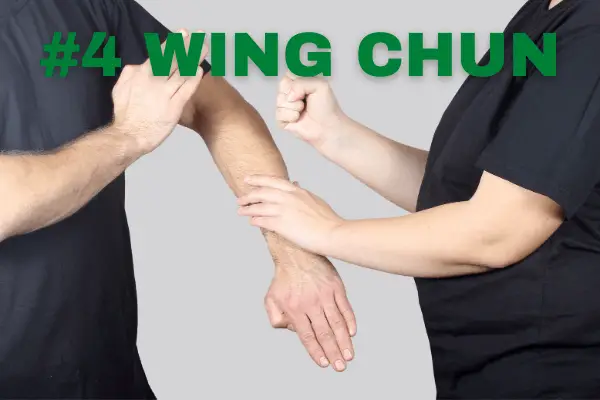
Wing Chun or Wing Chun Kuen is a Chinese fighting technique that needs fast hand speed with quick leg movements to win a fight.
The base of Wing Chun is to stay relaxed to keep the gas tank saved and forcing the opponents to gas out with their own power.
So Wing Chun is a merger of softness – while staying relaxed – and hardness – by throwing the lethal combos at the opponents.
There is a lot to learn in Wing Chun as foot drills to maintain the perfect posture even while throwing or taking the strikes. Then there are a lot of arm cycles and other training of different combinations of strikes and punches along with clinches and grappling.
#3 Judo

Judo is also about softness toward the opponent. Since it is a subsidiary of Jujutsu, Judo is all about the self defense and less damage to the opponents.
Judo translates in English as “Gentle Hand or Yielding Hand”. Judo teaches how to tackle an assailant with a gentle way to make him tired and then put him on the ground to finish the matter with a choke or lock.
Judo goes to the very keen details during a fight because there is a typical training for holding opponents well from his or her clothes, and this all requires a great level of training to master it all.
There are a lot of ways to take an opponent down to the ground during a clinch, and all of these takedowns varies from situation to situation.
The free practice of Judo is called Randori. And different forms and acts of Judo are known as Kata. When there is not a hand to hand fight, some weapons are also allowed to use in a pre-arranged discipline.
The main focus of Judo is to land a Pin during the clinches and grappling. Due to its softness, Judo is included in the Olympic games and is becoming always more pupular in the world. It might look like a simple trick which everyone is doing during a street fight, but actually, it is a big science to learn the techniques of dropping an assailant from any angle while staying cool and calm to sustain one’s own power and energy.
if you are curious to know you are the richest judo player
#2 Muay Thai
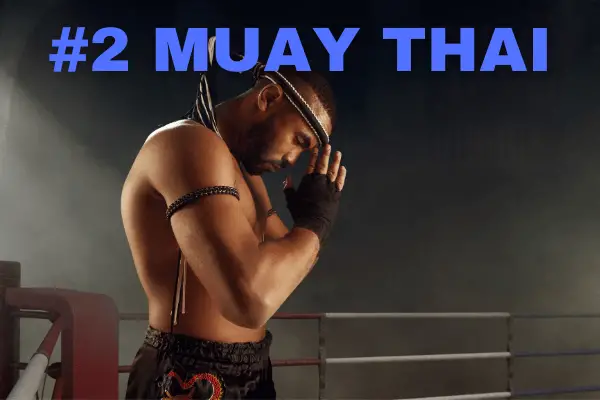
Muay Thai or Thai Boxing is Thailand’s native fighting discipline and their national game as well.
Due to its attachment to the liberation of the country, it is much closed to the Thai folks and common people.
Muay Thai is an art of eight limbs where feet, knees, elbows, and many type of punches are used as devastating weapons during a fight.
Muay Thai is about maintaining a rhythm with body movement to judge what the opponent has brought to the table. And after figuring out the opponent’s arsenal, a Muay Thai fighter land a non-stop flurry or shower of combinations to give maximum damage to the opponent with punches and kicks along with lethal elbows and rib breaking knees at the lever.
Mastering all the eight weapons is a difficult task for a common man and needs a lot of practice and training to use Muay Thai effectively.
Muay Thai strikes differs from inside to outside technique, and the learner needs a full time dedication to be a master in this fighting discipline.
These are my 7 REASONS Why Choose to Learn Muay Thai
#1 Brazilian Jiu-Jitsu
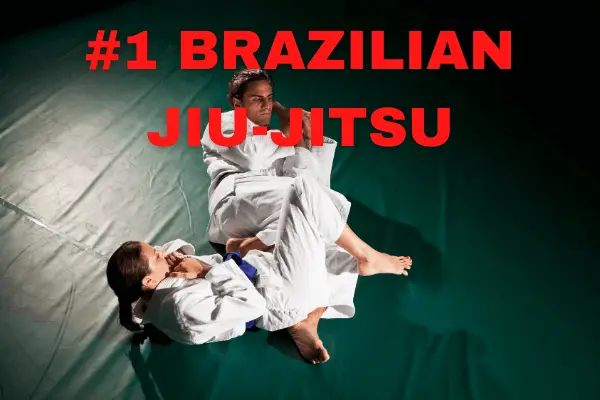
BJJ or Brazilian Jiu-Jitsu is number one on this list, many writers, fighters, and practitioners think the same way.
While learning Brazilian Jiu-Jitsu, one needs to master the structure of the human body to learn the points where air chokes and joint locks are to be applied.
BBJ was typically designed to nullify the reach and the height advantages of an opponent having a big structure.
We know all the street fights start from the standing positions and end at the ground where people are manhandling each other on the earth.
This is the point where BBJ is the best to use, and that is the reason it is related to “Ground-and-Pound”. The key is to master the locking system which can be applied at any part of the body of the opponents.
If a BJJ fighter gets the arm of the opponent in the reach, he goes for the armbar. When the leg is in range, the fighter tries for the leg lock, and so are the cases with neck and shoulders where the purpose is to force the opponent to quit or make them unconscious to end the matter at its earliest.
To maintain a proper joint lock or a choke, the fighter first needs to win a top during the clinches, and that is an art itself. There are situations when a fighter under a lock turns it into a reversal one to the opponent, and this art of reversing a lock or choke is a super technique only known to the real Brazilian Jiu-Jitsu fighters.
Anyway if you are going to start i give you my 11 Things To Know Before Starting BJJ and the good thing is that you can start bjj at any age.
What is the Difference Between Jiu-Jitsu and Judo?
You might also like to read:
CONCLUSION
That’s all about the top 10 martial arts hardest to learn.
We could add Silat, Combat Sambo, and other brutal fighting styles with hard training, but we mentioned those which are easy to be accessed for everyone in every part of the world.
These are the deadliest fighting styles, and we can make a list of ” The most deadliest fighting styles” in the future where we will share the details of those that bring too much damage to the learners let alone the opponents, but for te moement i wuold like to suggest you the Best Martial Arts For Girls
